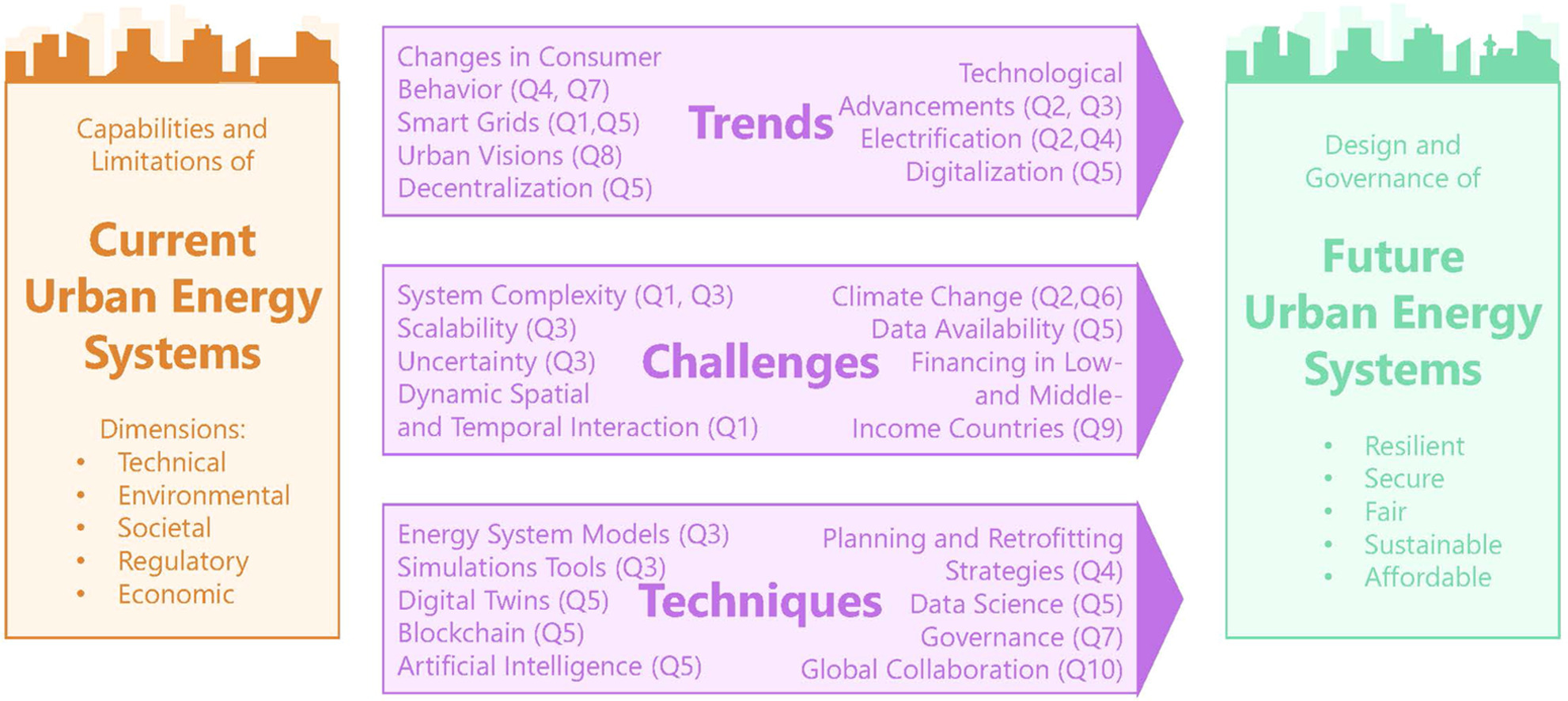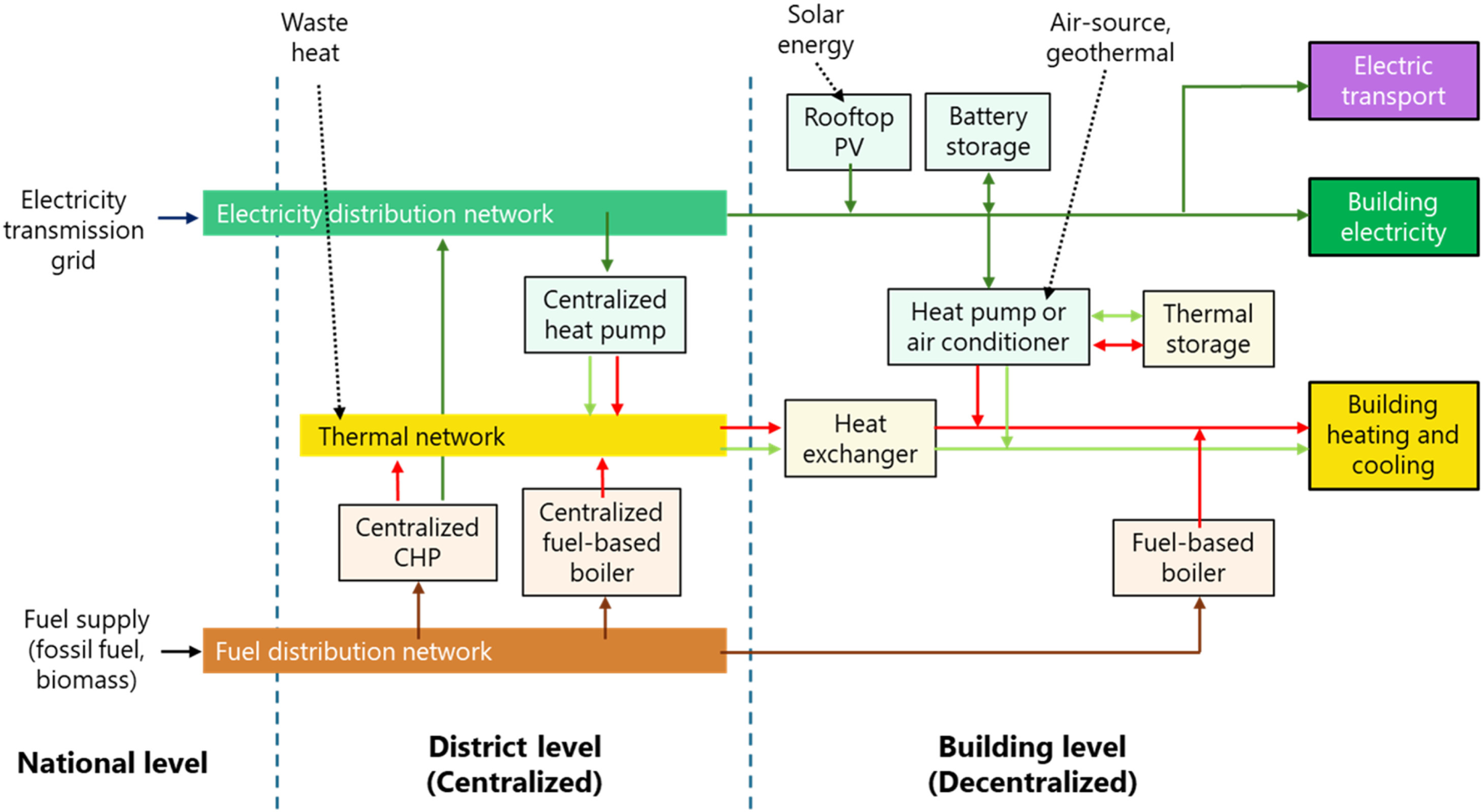This study examines ten critical questions that define current challenges, methodologies, and future priorities in Urban energy systems (UES) design, providing a comprehensive understanding of techno-economic and socio-institutional aspects.
Highlights:
- Integrated UES design should consider spatial, temporal, and sectoral interdependencies.
- Urban sectoral trends drive towards electrification, climate adaptation, and system integration.
- Advanced modelling & digital twins improve UES planning but face data & integration gaps.
- Techno-economic and institutional design should align with sustainable UES.
Keywords:
Urban energy systems, Buildings, Energy system modeling, Renewable energy, Urban visions, Sector coupling, Electrification, Decarbonization, Energy transition
Corresponding author:
- Binod Koirala, Urban Energy Systems Lab, Swiss Federal Laboratories for Materials Science and Technology, Überlandstrasse 129, 8600 Dübendorf, Switzerland, binod.koirala@empa.ch

